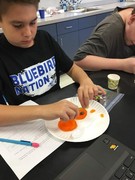Working...

Isotope Models in 6th grade Physical Science
Isotopes can be identified by using a value called atomic mass. Atomic mass is the sum of the number of neutrons and the number of protons in a nucleus. The mass can be given in names for isotopes, such as hydrogen-1, hydrogen-2, and hydrogen-3. Carbon, which has an atomic number of 6, has three isotopes: carbon-12, carbon -13, and carbon-14. How many protons are in the nucleus of each isotope? How many neutrons? What is the atomic mass of each of carbon's isotopes?
Students should be able to answer these questions after having created lithium isotopes in class.
Answers: carbon's three isotopes have atomic masses of 12, 13, and 14. All have 6 protons. C-12 has 6 neutrons, C-13 has 7 neutrons, and C-14 has 8 neutrons.
Edible Cells
Today 7th grade Life Science Students constructed cell models made from Jell-O and candy. They analyzed candies given them and selected appropriate candies to represent organelles in a eukaryotic cell. See if you can tell what organelles are represented in their models.
nucleus
mitochondria
chloroplast
vacuole
smooth endoplasmic reticulum
cell membrane
cell wall
Life Science at Maxwell
On September 16th the 7th grade Life Sceince class traveled to Maxwell Wildlife Refuge for a day of exploartion as field biologists. Click the following link for pictures.
/vimages/shared/vnews/stories/57e84774ea25b/Maxwell.mp4
In the morning students listened to a presentation by Cliff Peterson, range manager at Maxwell, explain how Maxwell came to be and what they would see on the refuge. He also talked about the local hisotry of the Santa Fe, Chisholm and Cherokee Trails, all of which run nearby. Students enjoyed a tram tour through the buffalo herd and stopped to collect a few samples at a buffalo wallow. They worked with partners to map a mini ecosystem on the prairie.
Improvising because of rainy weather students spent the afternoon in the museum as they participated in small group activities to observe and investigate some of the plant life in the refuge and apply information from the morning tour.
These activities included Plant Idenification, Building a Seed, and That's A Lot of Stomata.
Plant Identification: Grasses are one of the most economically important families of plants; they are grown as major crops, provide forage and shelter for livestock and wildlife, and serve as turf and ornamentals.
In spite of their prevalence, differentiating one species of grass from another is difficult because they tend to all look very similar. However, grass identification is critical for assessing the condition of range, pasture, and crops and for judging the progress of restoration of degraded grasslands.
Students learend how to identify different grasses by describing their anatomy.
Build a Seed: Before they can grow into new plants, seeds need to leave the seedpod. If all the seeds a plant produced landed just underneath the parent plant, they would be too crowded. The various methods of seed dispersal are designed to ensure that as many seeds as possible have a good chance of growing up to produce seeds of their own.
Students designed a wind dispersed structure that will carry a single seed (kidney bean) the farthest distance possible.
That's A Lot of Stomata: Did you know that plants 'breathe' through their leaves? Tiny openings called stomata allow plants to exchange gases necessary for cellular processes, such as photosynthesis.
The gas exchange that occurs when stomata are open facilitates photosynthesis. Photosynthesis is the process by which plants convert sunlight into usable energy.
Students collected a leaf and created a mold of its stomata. Observing under a microscope they counted the number of stomata observed. Do all leaves have the same number?
Determining Density
Life Science
Students practice using gram scales and graduated cylinders to learn how to calculate density.
Density is a way to describe how many atoms are packed into a space. The atoms of different substances pack differently, so as a result the weights of the two substances will be different even if the volumes are the same.
Density is calculated as the mass of a sample of the substance divided by the volume of that sample. This tells us how dense it is in some standardized unit such as grams per cubic centimeter. This is useful, as you can actually use the density as a property to help identify what the substance is. For instance, a lot of metals look similar, so density can be used to help figure out what a sample of metal might be; and you can figure out the density just by weighing and measuring the object, so you don't need to damage it to find out what it is.
100 Numbers!
7th Grade Math
Students in 7th grade math learned what the features of good group work looks like through the math activity 100 Numbers.
In the beginning some students were not totally involved. However, through discussion of the task and their own understanding of strategies they all became engaged and supporting of the groups.
At the conclusion of the activity class discussion led to a student generated list of what group work looks like and sounds like. Following is the list they created.
- All group members work together and are FOCUSED.
- Group members have heads together.
- Everyone participates.
- Everyone is working on the assigned task.
- Group members discuss a plan before beginning the task.
- Everyone is communicating with each other in an appropriate voice.
- You have support from your group members and help each other out.
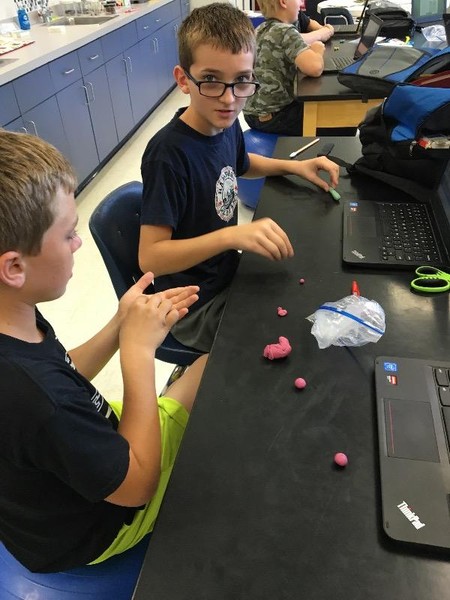
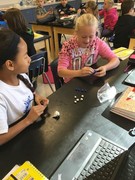
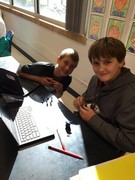
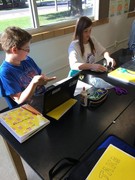
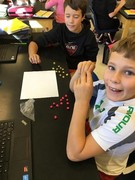
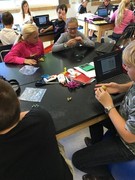

.jpeg)

.jpeg)
.jpeg)
 (1).jpeg)
.jpeg)
 (1).jpeg)

.jpeg)

.jpeg)

.jpeg)
.jpeg)
